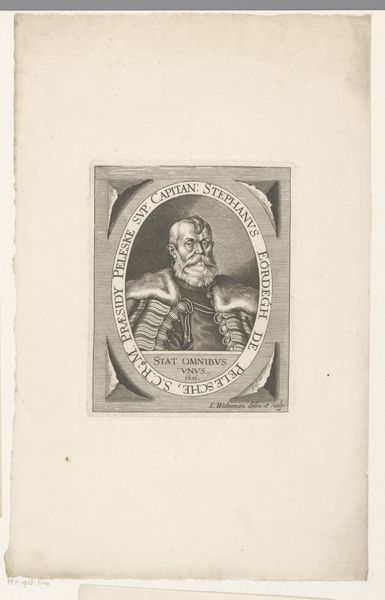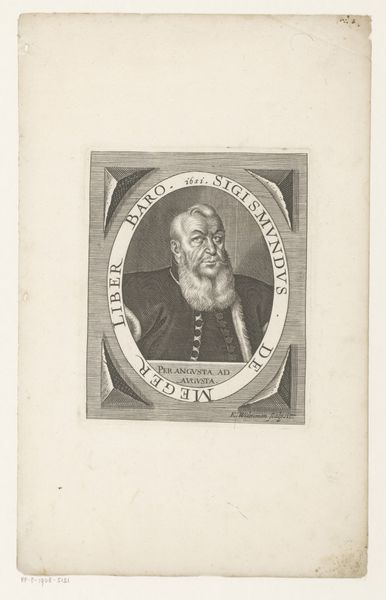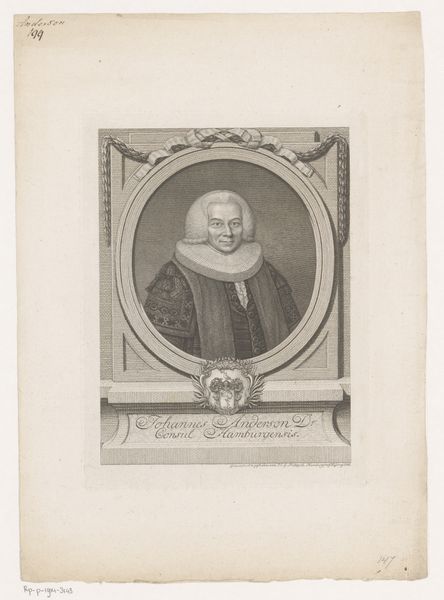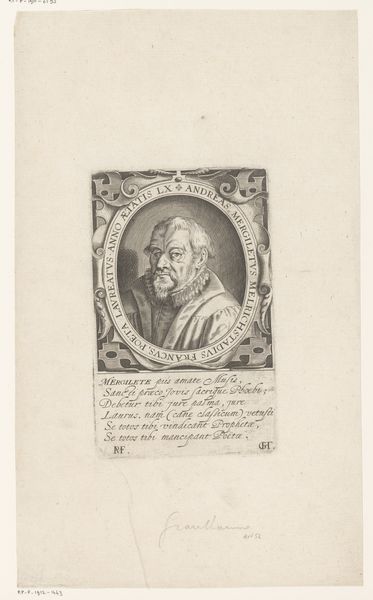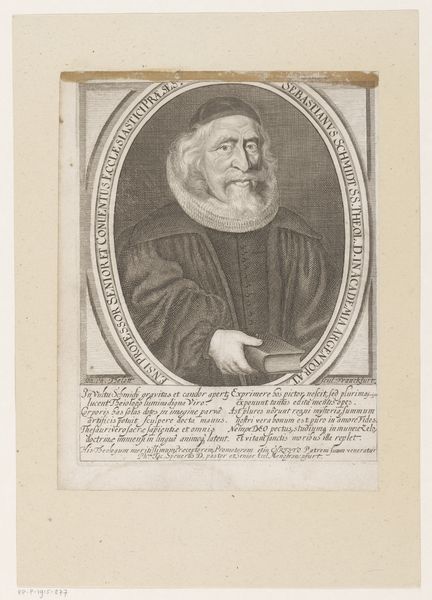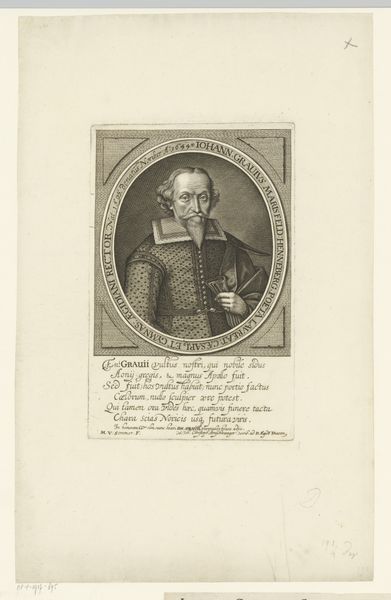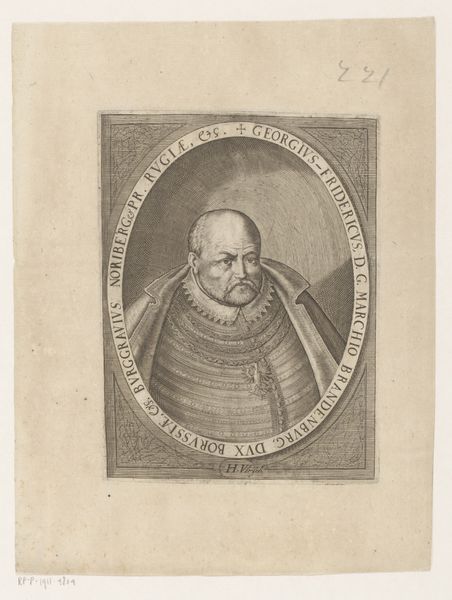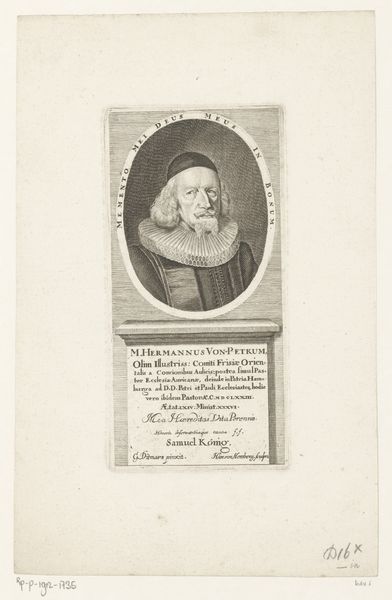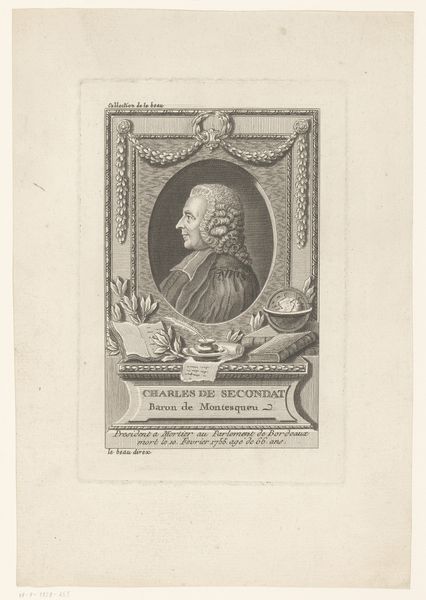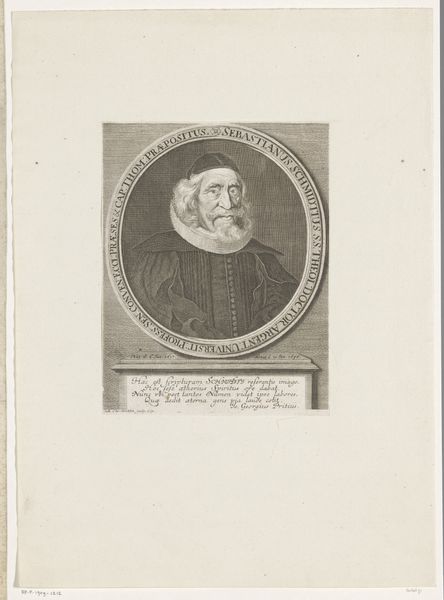
print, engraving
#
portrait
#
baroque
# print
#
old engraving style
#
engraving
Dimensions: height 150 mm, width 114 mm
Copyright: Rijks Museum: Open Domain
Editor: So, here we have "Portret van Zsigmond Lónyay," a 1649 engraving by Elias Widemann, housed in the Rijksmuseum. It feels very formal, very much about projecting power through meticulous detail. What's your take on this piece? Curator: This engraving presents a fascinating opportunity to delve into the visual construction of authority during the Baroque period. The subject, likely a nobleman, is framed not only by the oval border, but also by the inscription, which positions him within a network of power relations, that needs deciphering to understand the person himself. What do you notice about his gaze? Editor: He's looking right at us, which feels direct and a little confrontational. Is this something new for portraits? Curator: Not entirely new, but its use here reinforces his status. Consider, too, how the intricate detailing of his clothing and the meticulous rendering of his features—the beard, the hair—work to solidify a specific image of masculine identity tied to land and birthright. Who do you think this portrait was for and how does that affect its messaging? Editor: I hadn't thought of that. It could be for other nobles or potential allies? To advertise his power? Curator: Exactly. These portraits often served as tools for social climbing, and asserting dominance, negotiating delicate relations, or establishing familial lineage through images that projected qualities aligned with their status and position within society. Considering the era’s socio-political climate, how do you think it reflects contemporary social values? Editor: Wow, I came in just seeing a portrait, but now it looks like it's about social dynamics and even political statements. I guess I learned that nothing exists in a vacuum. Curator: Precisely. Art is always in conversation with its context. Looking at it critically allows us to better appreciate and to start untangling layers of assumptions we never knew existed.
Comments
No comments
Be the first to comment and join the conversation on the ultimate creative platform.
